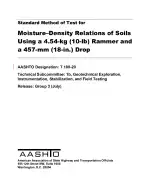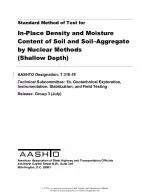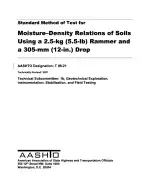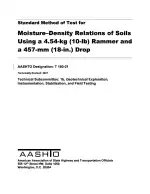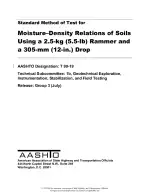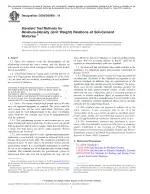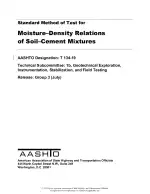AASHTO T 180-20 PDF Download
Standard EN SampleStandard Method of Test for Moisture-Density Relations of Soils Using a 4.54-kg (10-lb) Rammer and a 457-mm (18-in.) Drop
Also Known As:
AASHTO T 180-20 is a standard method of test used to determine the moisture-density relations of soils. This method involves compacting soil samples in a specific mold size using a 4.54-kg (10-lb) rammer dropped from a height of 457 mm (18 in.). The standard provides four alternate procedures, labeled Method A, Method B, Method C, and Method D, each associated with a specific mold size and sieve size for selecting the soil material.
The selection of the method to be used should be specified in the project specifications. If no method is specified, Method A is the default choice. It is important to note that the test applies to soil mixtures with a maximum of 40% retained on the 4.75-mm sieve when using Method A or B, and a maximum of 30% retained on the 19.0-mm sieve when using Method C or D. Soil samples containing oversize particles (coarse particles) require corrections to be made according to AASHTO T 224 in order to compare field density with the compacted specimen. The standard allows for a minimum percentage of oversize particles below which correction is not necessary, but by default, correction is applied to samples with more than 5% by mass of oversize particles.
If the specified maximum tolerances for oversize particles are exceeded, alternative methods of compaction control must be employed. It is suggested to use a test fill to determine the required degree of compaction and a method for achieving that compaction, followed by specifying the type and size of compaction equipment, lift thickness, and number of passes to control the compaction process.
| Language(s) | English |
| File Size | 1.0 MB |

